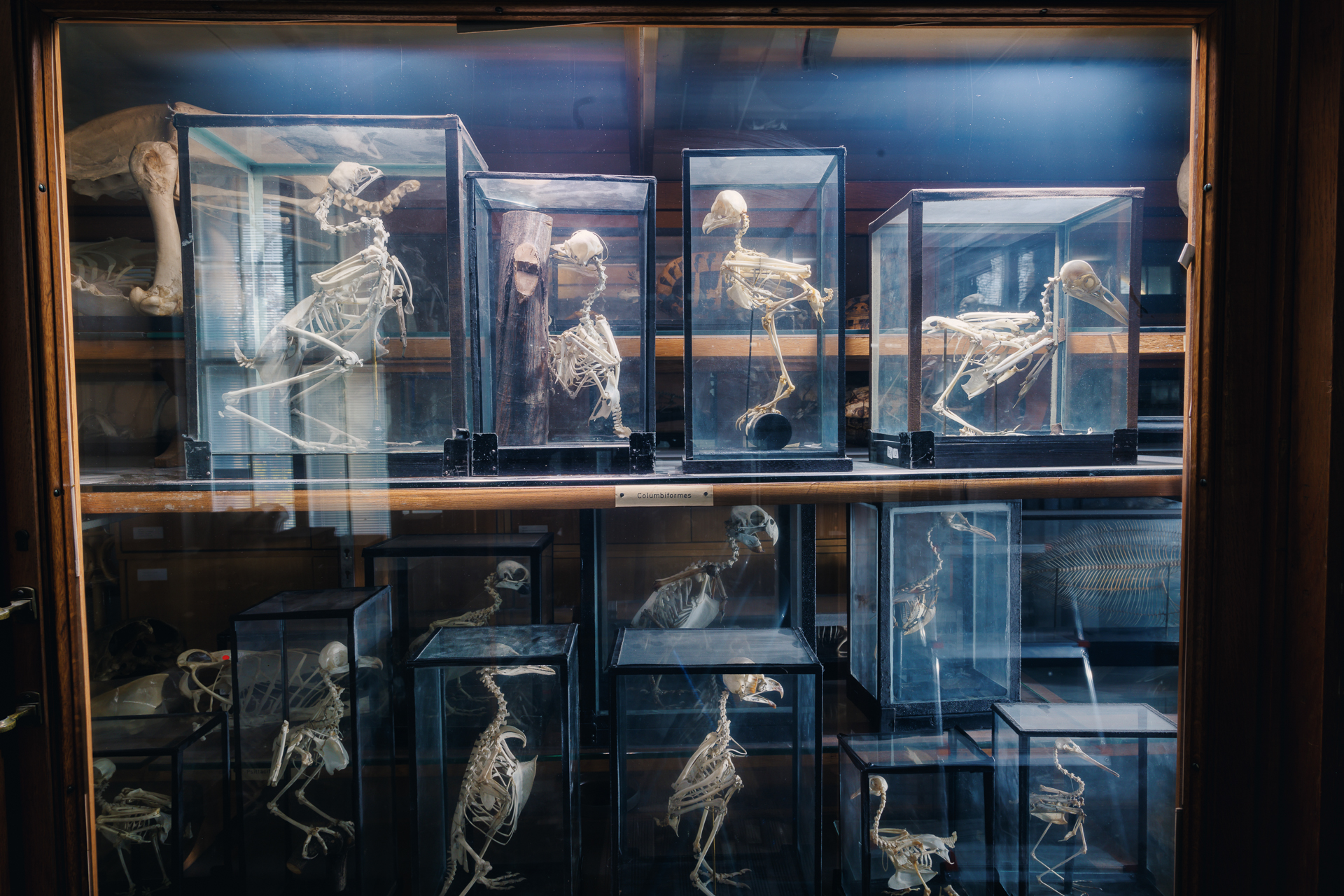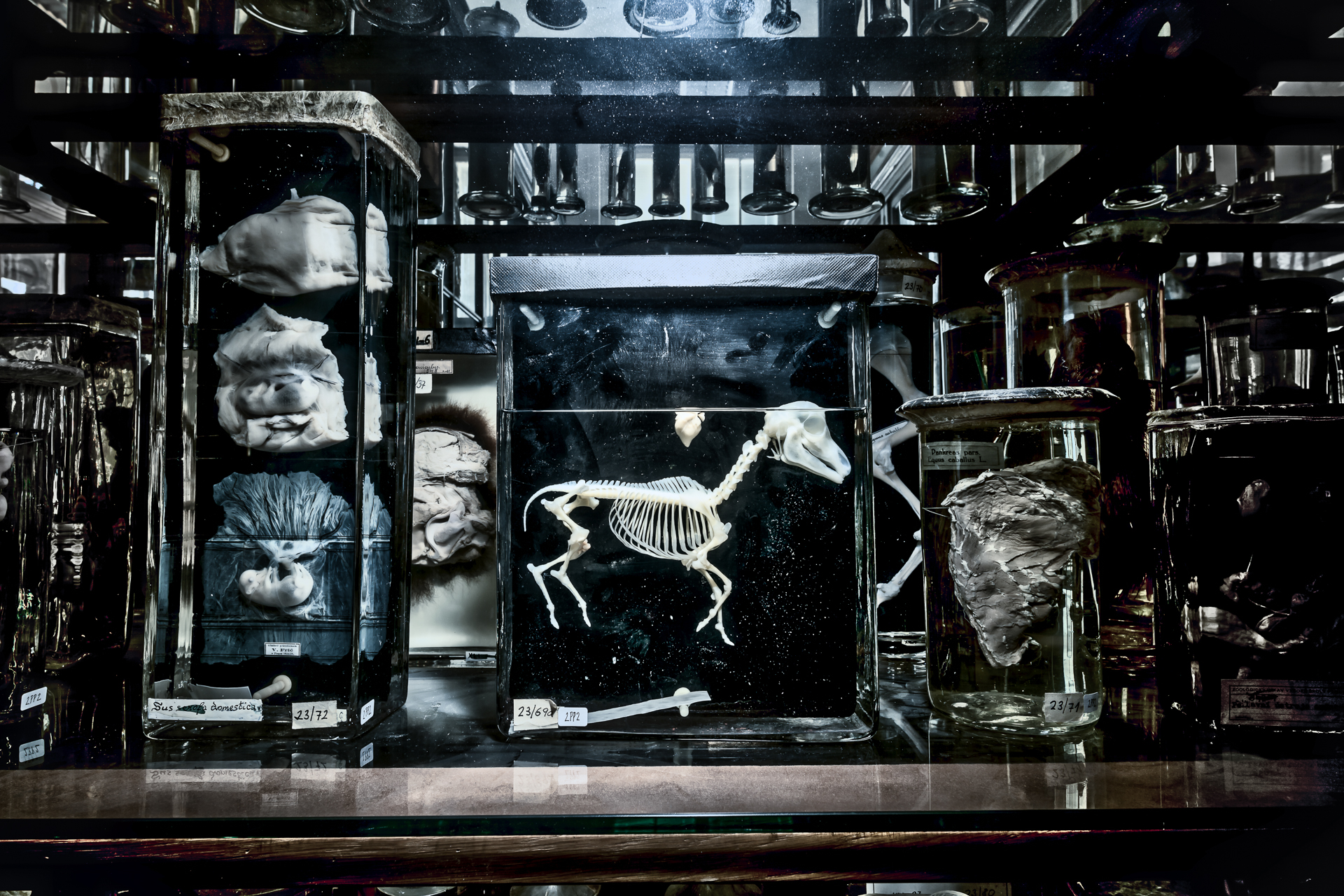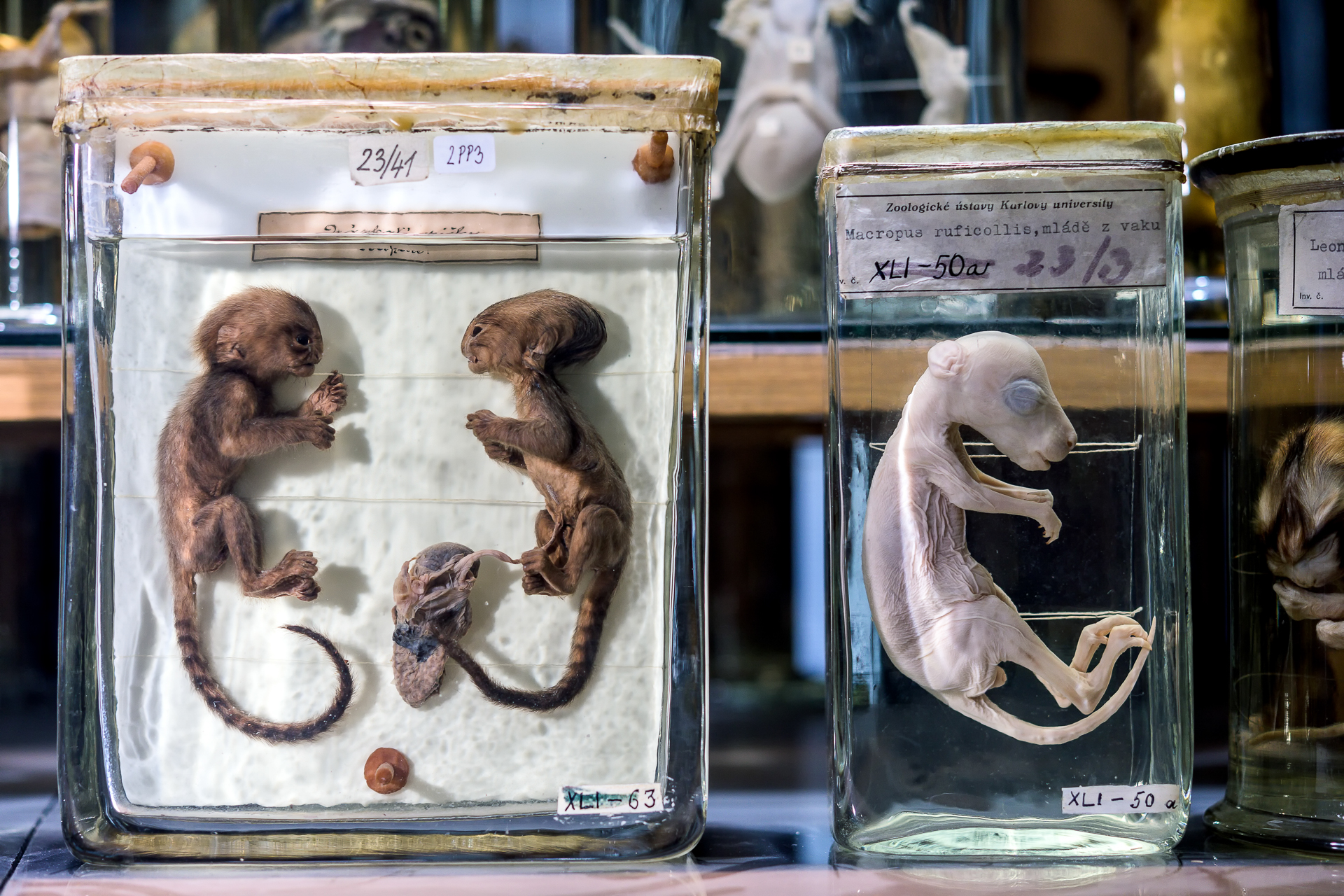The Zoological Collections of the Department of Zoology house a historical assortment of wet specimens, taxidermy, and osteological preparations of various vertebrate and invertebrate species. Most of the specimens date back to the late 19th and early 20th centuries, originating from the former Czech-German Charles-Ferdinand University. In 1945, following a presidential decree, the German division of universities was dissolved, and all its assets, including the zoological collections, were transferred to Charles University. A significant portion of the preserved materials comes from the former German Zoological Institute, which held extensive collections. Currently, more than 5,000 exhibits are displayed in the original historical showcases.


The collections include not only commonly found species but also rare and remarkable specimens. Among these is the taxidermy mount of the now-extinct passenger pigeon (Ectopistes migratorius), once abundant in North America but hunted to extinction for its meat. The last wild individual was shot in Ohio in 1900, and the final captive specimen died in Cincinnati Zoo in 1914.
Another noteworthy exhibit is a specimen of the critically endangered slender-billed curlew (Numenius tenuirostris). Although this species was reportedly observed in the Czech Republic in the past, all sightings have been either refuted or unconfirmed. Only three specimens are housed in Czech museums and collections: one from Poland, another from Spain, and the third—held in this collection—lacks location data. This specimen could potentially attest to the historical presence of the species in the region, but without locality records, this cannot be definitively proven.

One of the most exceptional exhibits is a wet specimen containing four embryos of the extinct Tasmanian tiger (Thylacinus cynocephalus). The last known individual of this species died in Hobart Zoo in 1936. The specimen features young still in the pouch, no more than two weeks old post-birth. Only 12 other specimens at this developmental stage are known worldwide. Ours are among the youngest preserved and the only ones outside Australian institutions. The embryos, likely two males and two females, were acquired by the former German Zoological Institute before 1897, most likely through Václav Frič, who supplied many specimens during that period. Unfortunately, no additional documentation has survived.
The collections serve not only specialized teaching purposes (e.g., Practical Exercises in Vertebrate Zoology, Animal Morphology, Ichthyology) but also research in comparative morphology. In addition to teaching and display materials, the collections include scientific materials. The collection of small mammals (rodents and insectivores) ranks among the largest in the Czech Republic. A unique feature is the extensive series of terrestrial small mammals from the Balkans and the Middle East, one of the largest of its kind globally. Additionally, the collection includes one of Europe’s largest holdings of mustelids. This scientific material is reserved exclusively for research and is not accessible to the public.
Occasionally, our specimens are utilized by other educational institutions. For instance, an anteater skull was used to create a 3D model for the educational center at Zoo Liberec. Our materials have also appeared in various exhibitions, such as Nature in Illustration by Jan Dungel at the Ohrada Forestry, Hunting, and Fishing Museum or the Franz Josef Land: 150 Years Since Its Discovery exhibit by the Map Collection of the Faculty of Science, Charles University. Furthermore, the historical spaces of the collections have featured in films and television series, including those directed by Jan Hřebejk (A Case for the Exorcist, State of Emergency).



Contact:
RNDr. Markéta Knitlová, PhD.
knitlova@natur.cuni.cz
Zoological Collections
Department of Zoology, Faculty of Science
Viničná 7
128 43, Praha 2
2nd floor, room No. 217
Entry is available by prior arrangement only.





















